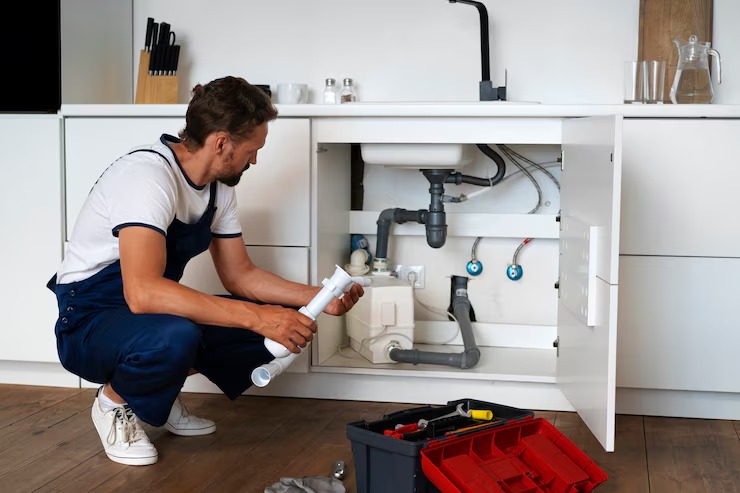Purpose-Built and Portable: Why Android Users Prefer Tailored Apps

Not all apps are built the same—and not all users want the same thing; for Android users in particular, flexibility, customization, and speed are non-negotiable. Whether you’re tracking live data, managing updates, or simply expecting a smooth, no-lag interface, a well-built app can change how you interact with your entire system. But it has to be built with your device—and your expectations—in mind.
Why Android Demands a Smarter Approach to App Design
Android users span various devices, screen sizes, performance levels, and regional setups. Unlike closed systems, Android offers choices, and with that comes the developer’s responsibility to deliver something that runs well across that variety.
A good Android app doesn’t assume conditions. It anticipates them. That means building for low data situations, optimizing battery use, avoiding unnecessary background activity, and offering versions that scale to older or mid-tier devices without friction.
Apps that fail to consider these factors often feel clunky. They stutter, overload the interface, or force a desktop layout onto a small screen. That’s not just annoying — it slows you down. And users notice.
That’s why more people are turning to options like the parimatch app for android, which prioritizes responsiveness, smart design choices, and real-world usability — not just feature lists.
Speed Isn’t Just a Luxury — It’s a Core Feature
In mobile environments, every second counts. You’re not opening apps in silence — you’re multitasking, switching screens, acting on signals, sometimes on a shaky network. That’s where design either helps or hurts.
Well-optimized Android apps reduce tap count. They anticipate your most-used actions and make them instantly available. They sync in the background instead of interrupting the experience. And they never leave you wondering whether your last action went through.
If an app doesn’t load in under three seconds, it’s already behind. That kind of delay might not matter in casual use, but smooth performance becomes a competitive advantage when real-time interaction matters.
Why Customization Is More Than Just Personalization
One of Android’s biggest strengths is user control. Yet many apps ignore that, locking users into rigid layouts or forcing updates that break familiar patterns.
A smart Android app respects your rhythm. It lets you arrange shortcuts, choose which notifications you receive, adjust display modes, and interact with data your way. Whether you prefer dark mode, low-data mode, or gesture-based navigation — the app should follow you, not lead you.
This flexibility isn’t a bonus. It’s a standard. It’s what makes the difference between an app you tolerate and an app you rely on daily.
Offline Handling and Device Adaptability
Android users often operate in variable conditions—low signal, power-saving mode, travel scenarios, or restricted memory space. That’s where a lightweight, adaptable app shines.
Smart apps cache data locally, allowing quick access even when the connection drops. They compress real-time updates to reduce bandwidth strain. They stay functional when you switch from 5G to Wi-Fi to no service and back.
Apps that fail to handle those transitions break your focus. But well-engineered tools stay stable — they recover fast, hold your place, and don’t make you repeat actions.
Install, Update, and Move On
Another key Android expectation is simple: no friction during installation or updates. If an app forces multiple permission requests, stalls during downloads, or requires you to reconfigure settings every time it updates, it loses trust.
The installation process should be one tap. The app should open cleanly without a tutorial blocking the interface. Updates should improve performance, not rewire the experience.
This is why many users prefer direct options through trusted sources. Installing something like the parimatch app for android gives them what they need — no store delays, no unnecessary changes, just a fast, stable app built for their phone, their region, and their pace.
Key Traits That Define a Good Android App
Across all use cases, the strongest apps tend to share a few core characteristics:
- Fast startup, even on older phones
- Lightweight install file
- Clean interface with intuitive navigation
- Flexible settings without hidden menus
- Silent updates that don’t disrupt user flow
- Compatibility with different screen sizes and Android versions
When these traits combine, users don’t need to think about how to use the app—they just do.
Conclusion
A good Android app isn’t about doing everything — it’s about doing the right things quickly, cleanly, and reliably. And for users who want real-time responsiveness, personalization, and consistency, design quality matters as much as functionality.
That’s why tools like the parimatch app for android continue to gain traction. They’re not just mobile versions of a larger system — they’re purpose-built environments that feel natural on the device you already trust. And when your tools fit your pace, everything else gets easier.


